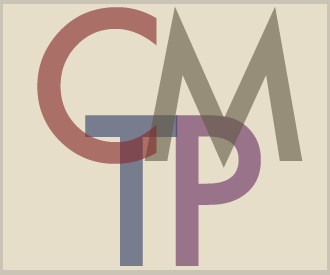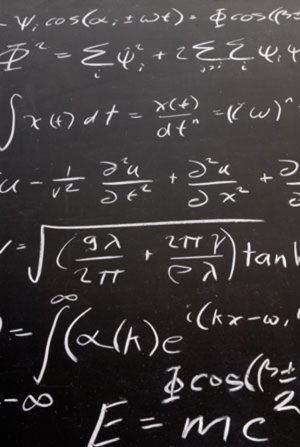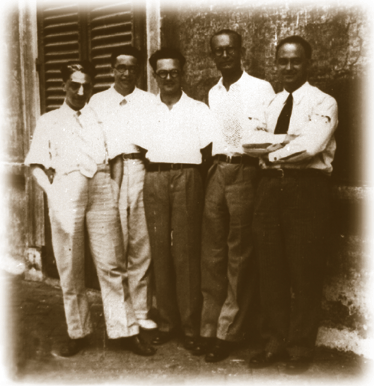
|
Center for Mathematics and Theoretical Physics |
||||||||||||||||
|
|||||||||||||||||
|
About the Center The Center has been founded on November 17th, 2009, as a research center of the Tor Vergata University in Roma and it is temporarily hosted in Tor Vergata's Mathematics Department. The members of its Scientific Council are distinguished researchers from the Mathematics and Physics Departments of the three Roman Universities: Sapienza, Tor Vergata and Roma 3. The Center has been founded on November 17th, 2009, as a research center of the Tor Vergata University in Roma and it is temporarily hosted in Tor Vergata's Mathematics Department. The members of its Scientific Council are distinguished researchers from the Mathematics and Physics Departments of the three Roman Universities: Sapienza, Tor Vergata and Roma 3.The aim of the Center is to take advantage of the high quality and wide spectrum of research in Mathematical Physics presently carried on in Roma in order to promote cross fertilization of Mathematics and Theoretical Physics at the highest level, by fostering creative interactions of leading experts from both subjects. MotivationIn pure research, modern Mathematical Physics, applied to fundamental mathematical problems of the latest physical theories, occupies what is perhaps numerically a minority role but conceptually a central one furthering a deeper understanding of physical theories through rigorous mathematical research and new lines of mathematical research suggested by the problems of Physics. Such research in Mathematical Physics flourishes in Italy, in particular in the Roman area.We retain that sustaining modern research in Mathematical Physics would be central in furnishing a positive signal for the development of fundamental scientific research in Italy; this support above all requires incentives for the new generations to dedicate themselves to pure science and to Mathematical Physics in particular. These incentives involve perspectives of work but also visibility and resonance for research activity, the possibility of international exchanges and a continuous presence of visitors who in turn bring experiences and exchanges with the world's most prestigious research groups. All the big industrialized countries can now count on prestigious centers of pure scientific research that attract the most eminent scientists and promote Science at the highest levels, in particular as far as Mathematics and Physics are concerned. For example, the IHES in Paris, the Max Planck Institutes in Germany, the ETH in Zurich, the RIMS in Kyoto, the IAS in Princeton, USA, can count among their number Nobel prize winner for physics and Fields medalists. Prestigious centers organized differently are for example the MSRI in Berkeley, the Mittag-Leffler Institute in Stockholm, the Institute for Advanced Studies in Dublin, the Newton Center in Cambridge, the Schrödinger Institute in Vienna, the Fields Institute in Toronto and the BIRS in Banff in Canada. We can also mention the recent center for Mathematical Physics in Hamburg and the projects for big new centers in Paris and Madrid. Now Italy, and in particular the Roman area, is in a unique position as far as basic scientific interdisciplinary research between Mathematics and Theoretical Physics is concerned, not only because of the high quality of research but also for the very ample spectrum of the subjects studied (see below). The only way to increase research and scientific culture is to take advantage and further the very high competences available so as to catalyze further developments. The creation of a Research Center in Mathematics and Theoretical Physics in Rome would therefore not only be natural but a key step to provide Italy and the city of Rome with an instrument of great impact and international visibility. Brief History and considerations on Physics and Mathematics in RomeIt is internationally recognized that interdisciplinary scientific research between Mathematics and Physics is carried out in Rome and this at the top of the international scale. In particular, Rome is unique in the world for the spectrum of subjects studied, such as Statistical Mechanics, Low Temperature Physics, Quantum Field Theory, Complex Systems, Algebraic and Differential Geometry, Operator Algebras and Dynamical Systems. All this has various historical origins.
First of all, the great and well known figure of Enrico Fermi should be recalled. Fermi, a theoretical and experimental physicist, and the celebrated school of via Panisperna are at the root of the modern development of Theoretical Physics in Rome and in Italy. During the period between the two wars the school of Fermi had attracted the best young Italian talents in research in Quantum Physics, an attraction that continued after the second war.
All this has various historical origins.
First of all, the great and well known figure of Enrico Fermi should be recalled. Fermi, a theoretical and experimental physicist, and the celebrated school of via Panisperna are at the root of the modern development of Theoretical Physics in Rome and in Italy. During the period between the two wars the school of Fermi had attracted the best young Italian talents in research in Quantum Physics, an attraction that continued after the second war.
On the other hand, Italian and Roman mathematical research flourished and was of great value at the beginning of the past century, as far as Algebraic Geometry is concerned with big names such as Ricci, Levi-Civita, Castelnuovo, Enriques, Severi, Zariski. In the field of Probability Theory, the great Roman mathematician Vito Volterra carried out prestigious research, in part interdisciplinary, between Mathematics, Physics and Economics. But the few talented youngsters still alive after the first war were attracted to Physics and did not suffice to allow mathematical research to continue with the same laurels. In the 50's and 60's Roman Theoretical Physics had at its disposal a large number of researchers of great talent and several of these could therefore devote themselves to interdisciplinary research between Physics and Mathematics, also because of the need to consolidate the fundamental discoveries of Quantum Physics, thus reaching an ever more varied field of studies. With a different trajectory, Mathematics was regaining impetus, sending young talents to make "stages" with important scientific institutions abroad, with a finalized and intelligent program of grants. Algebraic Geometry and Algebra thus found new dawns again by taking up the tradition of many tens of years earlier. All this has led to divers schools of Mathematical Physics, understood as a subject of scientific interest for the two disciplines. Hence we find today a great number of scientists of the highest level in Mathematics and Physics studying different problems with different methods and motivation and spread about various scientific institutes and departments. The need is therefore felt to give to this community a home and a common reference point, thus taking advantage of and incentivating their activity. A great scientific and cultural patrimony is involved, which, seen in the right light, can lend much lustre and prestige to Rome and Italy, well beyond the actual confines. | ||||||||||||||||